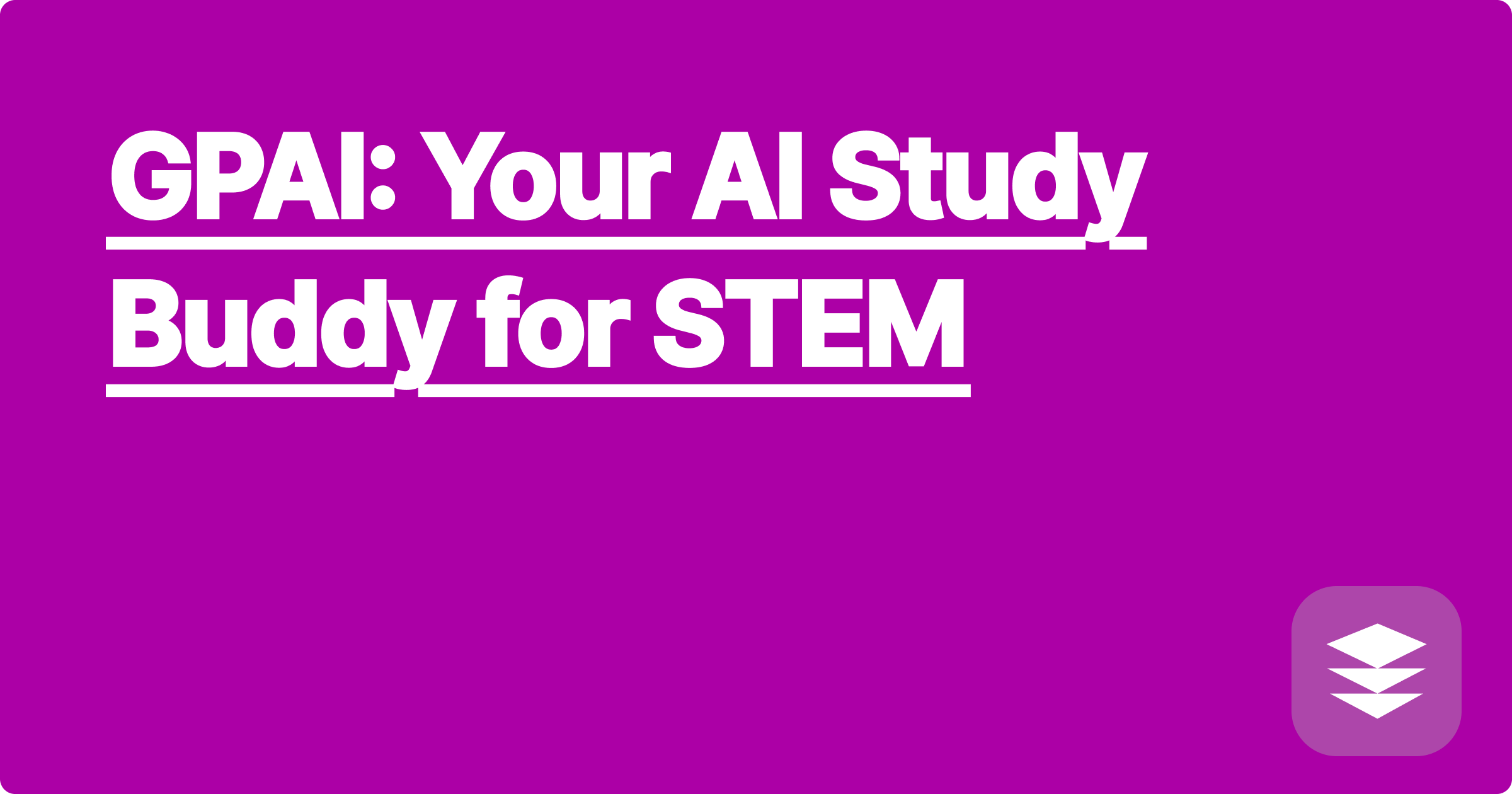
The world of STEM is built on data. From complex equations in physics to intricate biological systems, STEM students and researchers are constantly grappling with massive amounts of information. Analyzing this data, visualizing trends, and drawing meaningful conclusions can be a daunting, time-consuming task, often hindering progress and impacting overall productivity. Imagine spending hours manually plotting graphs, sifting through research papers, or struggling to understand a complex concept. This is where the power of AI comes into play, transforming from a futuristic concept into a practical, indispensable study buddy. AI-powered tools can streamline your workflow, automate tedious tasks, and unlock new levels of understanding, effectively acting as your personalized GPAI (Generalized Personal AI) assistant.
This shift towards AI-driven research isn't just a trend; it's a fundamental change in how STEM fields operate. Embracing these tools can significantly impact academic success, allowing students and researchers to focus on the core aspects of their work: critical thinking, innovation, and problem-solving. By offloading time-consuming data analysis and visualization tasks to AI, you can free up valuable time for deeper exploration, leading to more impactful research and a richer learning experience. This blog post will delve into the practical applications of AI in STEM, providing actionable strategies and real-world examples to empower you with the knowledge and tools to maximize your research potential.
STEM fields often involve complex datasets that require extensive analysis. Traditionally, this process involves manual data entry, cleaning, and processing, which can be extremely time-consuming and prone to errors. Visualizing this data to identify trends and patterns is another significant challenge, often requiring specialized software and advanced technical skills. Furthermore, staying updated with the latest research and literature in your field can be overwhelming, with a constant influx of new papers and publications. These challenges collectively contribute to a significant bottleneck in the research process, hindering productivity and limiting the speed of discovery. For students, this can translate into late nights, increased stress, and a struggle to keep up with the demands of their coursework. For researchers, it can impact the timeline of projects, limit the scope of their investigations, and even affect the overall impact of their findings.
AI tools like ChatGPT, Claude, and Wolfram Alpha offer a powerful solution to these challenges. ChatGPT and Claude can be used to quickly summarize research papers, generate code for data analysis, and even help brainstorm research ideas. Wolfram Alpha excels at complex calculations, data visualization, and providing instant access to a vast knowledge base of scientific information. Imagine having a virtual research assistant that can instantly generate interactive plots from your data, summarize key findings from hundreds of research papers, and even help you understand complex concepts through clear explanations and examples. This is the power of AI in STEM. By integrating these tools into your workflow, you can dramatically reduce the time spent on tedious tasks, allowing you to focus on the intellectual core of your work.
Let's walk through a practical example using ChatGPT for data analysis. First, you would provide ChatGPT with a clear prompt, outlining the type of analysis you need and the specific data you're working with. For instance, you might ask it to "Generate Python code to perform a linear regression analysis on this dataset" and provide the data in a structured format. Next, ChatGPT will generate the code, which you can then copy and paste directly into your preferred coding environment. You can further refine the code by asking ChatGPT to add specific functionalities, such as calculating R-squared values or generating visualizations. Finally, you can run the code and interpret the results, using ChatGPT to help you understand any complex statistical concepts or visualize the output in a more intuitive way.
Consider a biology student researching the effects of different fertilizers on plant growth. They could use Wolfram Alpha to quickly calculate growth rates, visualize the data with different chart types, and even compare their findings to existing research data. A physics student working on a complex mechanics problem could use Wolfram Alpha to solve equations, visualize vector fields, and explore different scenarios. An engineering student designing a bridge could use ChatGPT to generate code for structural analysis, optimizing the design for strength and efficiency. These are just a few examples of how AI can be integrated into various STEM disciplines.
To effectively utilize AI in your STEM studies, start by identifying your biggest time sinks. Are you spending hours manually plotting graphs? Struggling to keep up with the latest research? Once you've identified your pain points, explore different AI tools to find the ones that best address your needs. Don't be afraid to experiment and try different approaches. Remember that AI is a tool, and its effectiveness depends on how you use it. Critical thinking and human oversight are still essential. Always verify the results generated by AI and use your own judgment to interpret the findings. By strategically integrating AI into your workflow, you can significantly enhance your productivity, deepen your understanding, and unlock new levels of academic success.
Finally, embracing AI in STEM is not just about adopting new tools; it's about changing your mindset. Be open to learning new skills, experimenting with different approaches, and integrating these powerful technologies into your research process. Start small, focus on specific tasks where AI can provide the most benefit, and gradually expand your usage as you become more comfortable. The future of STEM is intertwined with AI, and by embracing these tools today, you can position yourself at the forefront of innovation and discovery.
AI Robotics Sim: Test Designs Efficiently
AI Quiz Maker: Personalized Learning
AI Biology Solver: Understand Concepts
AI for Research: Data Analysis Power
AI Essay Writer: Improve Your Writing
AI Algebra Solver: Get Unstuck Now!
AI Prep: Conquer STEM Challenges
AI-Powered Lab Notebooks: Boost Efficiency